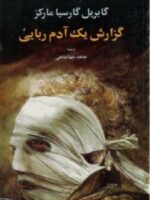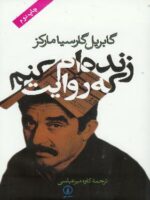’’Love in the Time of Cholera’’ Characters
• Florentino is a hopeless romantic who fell deeply in love with Fermina when they were teens. When she calls off their engagement, he devotes himself to winning her back. Believing he needs to become successful to do so, he works hard, becoming president of a riverboat company. But his obsessive passion is all that really sustains him, even as it makes him literally lovesick for decades. To avoid his despair, he becomes a sex addict, leading to further unhappiness.
• Fermina is the iconic stubborn woman, defying her overbearing father’s attempt to marry her off to the successful Juvenal Urbino, though she ultimately marries the man when a close cousin earnestly convinces her of Urbino’s good character and Fermina’s own precarious prospects. Yet she never stops loving Florentino.
• Juvenal is a prestigious doctor so passionately committed to eradicating cholera he has no emotional energy left to devote even to his own family. However, in a final letter, he confesses his abiding love for Fermina. Despite being otherwise emotionally unavailable, he carries on a brief, strained affair with a married woman.
• Lorenzo is Fermina’s father, a mule trader turned secret arms-trafficker in a bid to become wealthier and more respectable. Instead, he is caught and exiled.
• Jeremiah is dead at the novel’s start, and his posthumous letter reveals he committed suicide believing he would no longer be able to make love and also, bizarrely, that he had once partaken of cannibalism. Having believed him a model of civility, his friend Juvenal realizes two major themes: People can be simultaneously admirable and wretched; and with loss of youth comes anxiety over losing passion.
• América Vicuña is Florentino’s last sexual fling, a fourteen-year-old who commits suicide when he returns to Fermina.
’’Love in the Time of Cholera’’ Summary
• The novel opens with elderly Dr. Juvenal Urbino examining Jeremiah’s corpse. Uncharacteristically, he feels great but suppressed emotion here and soon discovers that Jeremiah’s death was the result of his friend’s mortal fear of aging and impotency. Distracted by his friend’s disturbing letter detailing further inexplicable revelations, Urbino fumbles his later attempt to recapture his pet parrot. Alternately exhibiting a concern for the creature that he shows to no one else and brooding over his deceased friend, Urbino finally locates the bird after a siesta full of sad reflections, ascends a ladder to capture his quarry, but slips and falls to his death.
• After a fifty-year absence, the lovesick Florentino reenters the widow Fermina’s at Urbino’s wake, indecently declaring his undying love. Shocked, the widow wakes the next day realizing she can think only of Florentino. This only makes her feel more guilty and aggrieved over her husband’s death, having never reassured him late in life of her love for him, despite many difficulties.
• Chapter 2 details Florentino and Fermina’s initial meeting and epistolary courtship, but her aggressive father sends her away repeatedly and threatens her life. Her years away have polished her into a refined but repressed woman, and despite her father’s insistence that she marry the successful young doctor, Juvenal Urbino, it is her cousin and close confidante, Hildebranda, who convinces her accept Urbino’s proposal. He, too, has deeply buried emotions–resulting from the suppressed trauma of his father’s death from cholera. Chapter 3 details their courtship, sparked by the bloom of her youthful health, which revives him for a time from his morbid obsession over cholera and the recent outbreaks that have done so much damage to the community.
• Meanwhile, in despair, Florentino has left for a faraway town to become a telegraph operator after his mother begs her brother to give the boy a job. Shipping out, the young man loses his virginity in a one-night stand and discovers an addiction to sexual pleasure as an escape from dealing with emotions, specifically his unrequited love for Fermina–but never acknowledging that his problem is an obsession with being hopelessly obsessed. The novel explores Florentino’s twisted psychology without ever taking a side, simply presenting him as he is and, eventually, as he changes late in life, due entirely to luck.
• With Chapter 4, Florentino begins working his way up the corporate ladder at Riverboat Company of the Caribbean, where his uncle is a board member. From a lowly clerk, he eventually becomes company president. All the while, he despairs over his passion for the lost Fermina, writes poetry, and even publishes a book inspired by his tortured but exultant emotions. The best thing he does here is rescue a woman from poverty by giving her a job, even though she initially caught his eye with her beauty, giving him the impression that she was a prostitute–which says more about him, and he realizes it, to his shame. They become close, but her eventual definitive rejection of him as any kind of romantic interest whatsoever, all expressed with maternal kindness, causes him to recommit to his love for Fermina. Already during this time, he recognizes that he is essentially peaceful and prefers to avoid conflict, so he accepts that he will have to wait for Urbino to die naturally before he can return to Fermina and declare his love openly once more. Even so and even as he becomes financially successful and well-respected, he continues to be a sex addict, although he is desperate to keep it secret, worried that would destroy Fermina’s sanity (indeed, somehow, he views his secrecy here a selfless act).
• Fermina’s marriage to Urbino, meanwhile, is intensely if quietly unhappy. Fermina feels remorse over losing Florentino and guilt over all her decisions since. Urbino may provide financial comfort and security, but his mother micromanages his wife’s every activity. In the midst of this misery, she learns of her father Lorenzo’s criminal smuggling activities, followed by his enforced exile. Surprisingly, even her father is furious over her mother-in-law’s breaking of Fermina’s spirit. Fermina’s inheritance of her childhood household, at her father’s behest, does nothing to help her regain any sense of autonomy. Once, she randomly encounters her lost love, and they can barely acknowledge one another, like hollowed-out shells of their former selves.
• By the turn of the twentieth century, the Urbino family had been living elsewhere for some years, their native region ravaged again by cholera. But they return near the opening of Chapter 5, and Florentino keeps her house under his almost daily watch, hoping to re-encounter her, but instead, she seems to have mysteriously disappeared from society. In fact, she’s gone to live with her cousin Hildebranda, now secretly estranged from Urbino upon discovering his intensely guilt-ridden affair with the young wife of a respected Presbyterian minister.
• And Florentino’s own love life has, meanwhile, resulted in the death of his latest lover, Olimpia, at the hands of her jealous husband. Believing that he may die from his dissolute lifestyle before he can declare his true love once more, he never thinks that Fermina might pass on before him. Instead, he continues to philosophize and poeticize on all his tortured feelings and the sublimity and ecstasy of passion. Again, the contrast with Fermina’s life during this time is stark; she soon returns home to her husband, feeling greater love for him though also wanting him to pay for hurting her. These conflicted emotions play out through strained domesticity.
• One day, Florentino goes to a movie with his longtime friend, Leona, whom he had long ago rescued from destitution. Running into the Urbinos, Florentino is stunned by Fermina’s elderliness and believes his feelings for her are now null and void. Instead of examining his stupidity, which Márquez tacitly wants us to understand is something he’s never been able to do, he decides to seduce Leona, willing to risk his one real friendship. Luckily for him, she rejects him nicely, and only Leona’s rejection allows Florentino to believe that he, too, is elderly, and no longer an attractive player. Finally, he realizes that time is running out for both himself and his great love. Still, he continues to believe in free love and visits prostitutes who somehow become so taken with him that they demand no payment. Meanwhile, Urbino remains wracked with guilt over his brief affair, sick with the love he never learned to properly share with his wife, right up until the moment of his death.
• Ironically, Florentino’s healthiest loving relationship is with Leona, whom he’ll never have sex with. She understands him too well, much better than he does himself. Meanwhile, Florentino believes that, truly, he is still a virgin, because he has never consummated his one true love with Fermina.
• During the first part of the final chapter, we revisit Florentino’s dramatic return to Fermina’s life, followed, however, by their yearlong epistolary relationship, during which they come to wax nostalgic on old feelings and shared experiences of lost youth. Florentino never mentions his affairs or sex addiction. Instead, he looks forward to giving joy and the ecstasy of romance to Fermina during this closing act of her long, sad life. Finding his opportunity with her at last, he does abandon a fourteen-year-old lover (and distant cousin), América Vicuña, who commits suicide upon realizing that her beloved Florentino has only have felt passion for another, an ancient woman. Conveniently, Florentino blots the news of her demise from his mind; however, he does eventually weep for her, quietly.
• Toward the end, the pair finally get to consummate their love away from a disapproving public, though, hilariously, Fermina does not believe for a minute that Florentino is a virgin. However, their literal consummation is an embarrassment, Florentino’s last pitiful attempt at sex. At last, he is impotent. Still, at the purely emotional level, their loving communion is all either has ever wanted, they both realize. This all occurs aboard one of his Riverboat Company’s pleasure cruises.
• To avoid the public censure for Fermina’s sake, Florentino has the captain raise the yellow flag signaling a cholera quarantine, allowing the happy elderly couple to enjoy their romance in solitude, likely until the end of their quickly declining natural lives, sailing up and down the riverways ’’forever.’’
Analysis of ’’Love in the Time of Cholera’’
• Love is the central theme of the novel. Márquez depicts love and lovers of all ages and varieties (Platonic, sexual, the consummation of love and sex)–but also what appears to be lovelessness but is actually deeply repressed care and passion (personified by Doctor Urbino). Some characters remain solitary, passion and romance having faded from their lives (Lorenzo), but even here there is room for unconditional love for one’s child (Florentino’s single mother).








